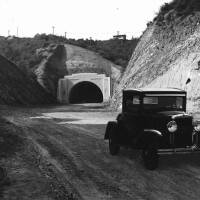Conservationists and Army Corps Come to an Understanding at Sepulveda Basin

A meeting between conservation groups and the U.S. Army Corps of Engineers Wednesday turned out well, according to Kris Ohlenkamp, Conservation Chair of the San Fernando Valley Audubon Society. "It at least established where we were in agreement. We are in agreement about removal of non-native vegetation, about the use of herbicide and about re-planting." The question now comes to down to the specifics.
Over the holidays, the SFV Audubon, the Sepulveda Basin Wildlife Area Steering Committee (SBWASC), and other conservationists were taken by surprise at the extent of damage the Army Corps had caused clearing the south side of Burbank Boulevard. The resulting backlash resulted in the community and legislators calling for answers, as well as measures to prevent similar incidents.
Verbal agreements reached Wednesday spell more participation on the part of conservationists, as well as transparency on the side of the Army Corps. "There is a commitment to collaborate with the Audubon, the California Native Plant Society, and other conservationists to select the plant palette and what non-natives need to be removed," said Jay Field, Chief of Public Affairs at the Army Corps.
The Army Corps has promised to notify SFV Audubon and SBWASC of all future activities in the area, and invite them to observe the proceedings. Work to remove already downed trees and branches that could affect the dam floodgates would proceed with the help of conservationists tagging trees. They would also identify non-native vegetation that can be removed in the process.
However, other things remained in question. These included: considering other native plants aside from salt grass to re-vegetate the area; restoration of the pond buried with debris from the original clearing; re-installation of pre-existing decomposed granite trails and maintenance roads, possibly even extending them.
The Army Corps also made no promises to implement the full Sepulveda Basin Restoration Plan that conservationists presented. The proposal outlined an "establishment of self-sustaining natural ecosystems in the area," which included expansion of the riparian habitat on Haskell Creek, expansion of the Bell's Vireo habitat for wildlife, and introduction of seasonal marsh or California grassland habitat.
"The environmental assessment was very specific in what work needed to be done in that area. Outside of that, we would need to go through the process of doing something like a supplemental environmental assessment to make sure we're doing work the right way," said Field. "Any modification to the Sepulveda Basin Master plan or the Vegetative Management Plan would have to go through a public notice and comment period," wrote Terri Kaplan of the Army Corps in an email. Ohlenkamp, however, is confident that regional water regulators would be open to their proposal and would help them gain traction in the ongoing talks.
Ohlenkamp says they are planning to start tagging non-native trees in the area as early as next week. In the meantime, the Army Corps is busy preparing a 26-point report in response to the Regional Water Quality Board's demand for an explanation of their actions. Their report is due February 11.

